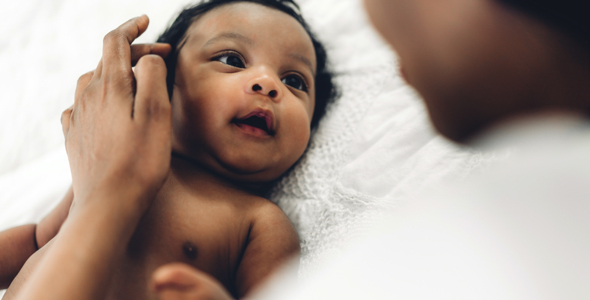By the bioMérieux Connection Editors
In the United States, Group B Streptococcus (GBS) bacteria are a leading cause of meningitis and sepsis in a newborn’s first three months of life. The bacteria may be passed from pregnant women to their babies during delivery, because about one in every four pregnant women carry GBS bacteria in their body. Often, women who give birth to babies who develop GBS disease do not feel sick or have any symptoms. Between two and three out of every 50 babies who develop GBS disease will die.
In newborns, GBS disease is mainly classified as early-onset or late-onset. Early-onset GBS disease occurs in the first week of life, while late-onset occurs from the first week through three months. It can be difficult to figure out how babies who develop late-onset GBS disease became infected. The bacteria may come from the mother during birth, or from another source. Early-onset GBS disease has declined by 80% with the increased use of intrapartum prophylaxis, which is the use of intravenous (IV) antibiotics, such as penicillin or ampicillin, during labor.
As of 2008, GBS isolates were 100% susceptible to a range of antibiotics, including penicillin. However since then, reduced susceptibilities to penicillin, one of the most commonly used antibiotics to protect babies during birth, have been reported. GBS resistance to other antibiotics such as clindamycin and erythromycin has also been found, with one study identifying resistance to clindamycin in 12.7% of isolates and resistance to erythromycin in 25.6% of isolates.
Our ability to prevent GBS disease in infants with antibiotics is one of the many reasons why we need to preserve the efficacy of these powerful drugs. Antimicrobial resistance (AMR) has become one of our world’s greatest health problems—each year in the U.S., at least 2.8 million people are infected with antibiotic-resistant bacteria or fungi, and more than 35,000 people die as a result. It has been reported that about 30% of all antibiotics prescribed in U.S. acute care hospitals are either unnecessary or suboptimal. However, antimicrobial stewardship can help slow the progression of AMR by ensuring antibiotics are prescribed and used correctly.
GBS Disease in Children and Adults
Although GBS disease is most common in newborns, people of any age can develop GBS disease.
GBS bacteria can cause infections such as:
- Bloodstream infection (also known as bacteremia) and sepsis
- Bone and joint infections
- Meningitis (infection of the tissue covering the brain and spinal cord)
- Pneumonia (lung infection)
- Skin and soft-tissue infections
It is very uncommon for GBS to cause meningitis in adults; however, serious GBS infections in adults, such as bacteremia, sepsis, and pneumonia, can be deadly. On average, about 1 in 20 non-pregnant adults with serious GBS infections die. The risk of death is lower among younger adults and adults who do not have other medical conditions such as diabetes, heart disease or cancer.
How GBS Bacteria are Spread
GBS bacteria commonly live in people’s gastrointestinal and genital tracts, but the bacteria do not spread through food, water, or surfaces. However, because the bacteria can be spread to newborns during childbirth, scientists are studying how the bacteria may permeate the vaginal barrier and infect the uterus. A mechanism that the bacteria use to do this has recently been discovered and there is hope that this discovery could yield new treatment options to significantly reduce the risk of infection to newborns.
Group B Streptococcus Awareness Month
July is international Group B Streptococcus Awareness Month, and this year marks the event’s 20th observance. The event was created to spread awareness about GBS, particularly for pregnant women and newborns. Despite decreases in early-onset GBS, GBS continues to be a cause of death in high-risk populations, and spreading awareness of GBS disease remains important.
Resources To Support Group B Strep Awareness Month →
Opinions in this article are not necessarily those of bioMérieux, Inc.




Is there a scale used to identify the intensity of strept B in a newborn? My newborn grandson was said to be at level two and now at level four(in Germany).
I was a GBS carrier and my son did develop GBS sepsis and was hospitalized at 14 days old for this.